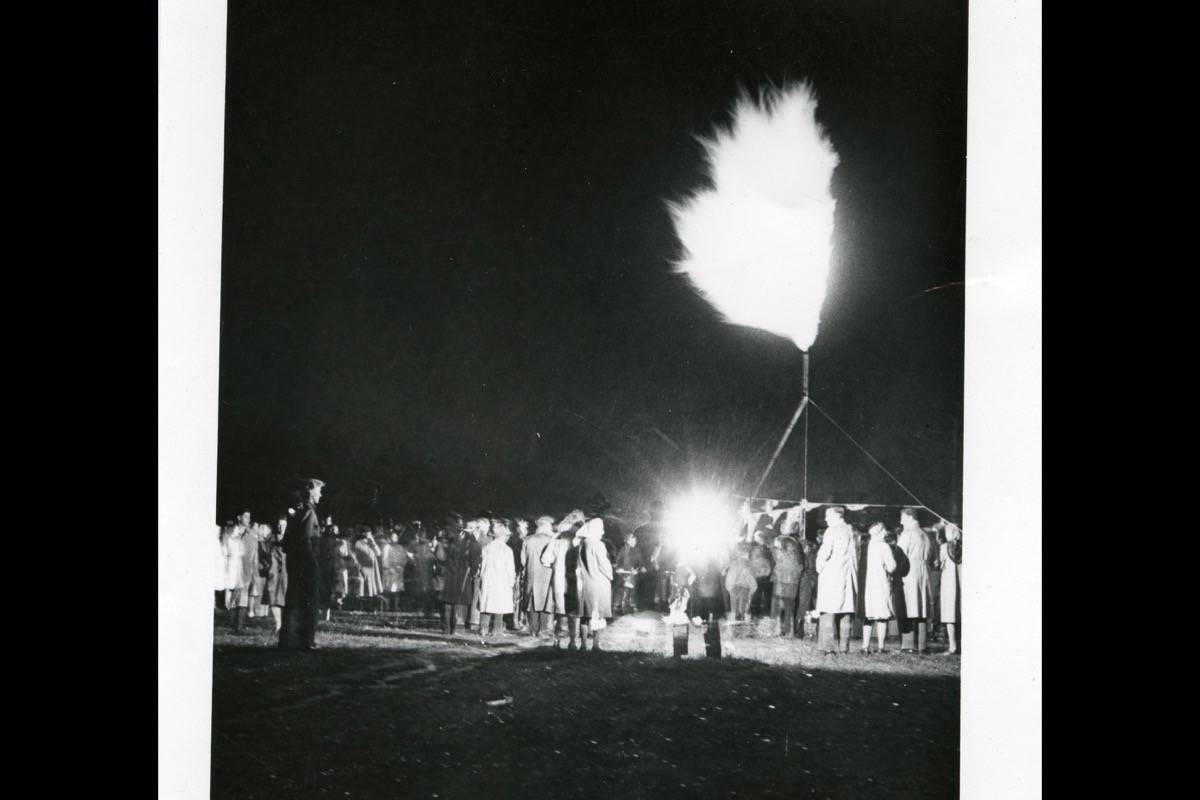With the large wildfires in B.C. and generally dry and dusty conditions through much of the summer across Alberta, air quality has been a frequent problem. However, not that many decades ago, smoke, dust and haze were the norm rather than the exception.
The reason was that wood and coal were used for heating and cooking. Moreover, electricity in Red Deer was generated by a large steam plant by the River that used vast amounts of cord wood for fuel.
The situation eased somewhat after 1928 when the City signed a power contract with Calgary Power (now TransAlta Utilities). The steam plant was closed. Much of the power subsequently came in from hydro-electric plants in Southern Alberta.
The really big change did not come until 70 years ago, in 1947, when natural gas service was inaugurated in Red Deer.
Even in pioneer times, there had been a realization that Alberta was blessed with abundant supplies of natural gas. Around the time of the First World War, significant gas fields were discovered at such places as Medicine Hat, Bow Island and Viking. Soon, natural gas service was available in Alberta’s larger centres of Medicine Hat, Lethbridge, Calgary and Edmonton and some small towns as well. However, drilling technology hampered the discovery of natural gas in deeper fields in other areas.
It was not until the early 1940s that concrete proposals were made to extend natural gas service into Central Alberta. In 1941, Northwestern Utilities drew up plans to build pipelines to Camrose, Wetaskiwin, Ponoka, Lacombe and Red Deer.
Despite the financial restraints brought about by the Second World War, funding for the venture was secured on the American capital markets. However, as the War continued to escalate, obtaining enough steel for the pipelines became impossible. All plans were consequently scrubbed for the duration of the War.
Meanwhile, very cold winter weather and the accompanying coal famines drove home the arguments that a new, inexpensive and reliable source of heat was needed. As a result, 40 days after the end of the War in 1945, the ratepayers of Red Deer voted to approve a natural gas franchise agreement by an impressive 467 votes to only three opposed.
The Gas Company pushed ahead with its plans as fast as it could. However, continuing shortages of steel caused delays in the installations of pipelines. The crossing of local streams also presented special challenges. This was resolved at the Blindman River with the construction of a unique suspension bridge. At Red Deer, permission was obtained by the Provincial Government to attach the mains to the new traffic bridge which was being constructed across the Red Deer River along Gaetz Avenue.
There were the usual glitches and problems with the installation of the gas service. Shortages of pipes caused occasional delays in hook-ups. Some homeowners protested when their well-established lawns and gardens were torn up. Some people feared the possibilities of gas explosions despite the many assurances of stringent safety measures by both Northwestern Utilities and the City.
Finally, in the late summer of 1947, the immense project came to a successful conclusion. More than 800 households and virtually every business in the City were now hooked up to a clean, efficient and inexpensive source of heat.
On Aug. 22nd, 1947, a crowd of several hundred people braved a cold and raining night to watch Mayor Harvey ‘Doc’ Halladay light a special flame in City Hall Park to officially inaugurate the natural gas service in Red Deer. The flame became a symbolic “beacon to the future” as this new service literally transformed the City.
With the passing of coal and wood as the major source of heat, the atmosphere over the City literally began to clear. The frequent clouds of smoke and haze vanished.
A sign was later erected on the North Hill which boasted, “Look Up. The Cleanest Sky in the World Is Above You.” While this may have been somewhat of an exaggeration, the contrast to the old days was highly noticeable. Red Deer had become a much more enjoyable place to live.



